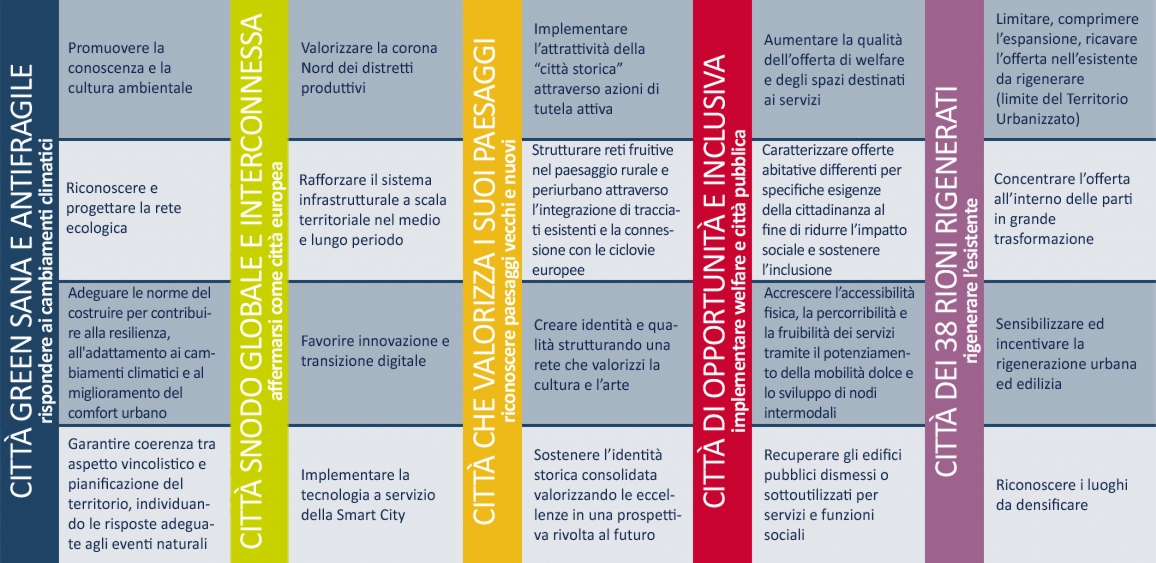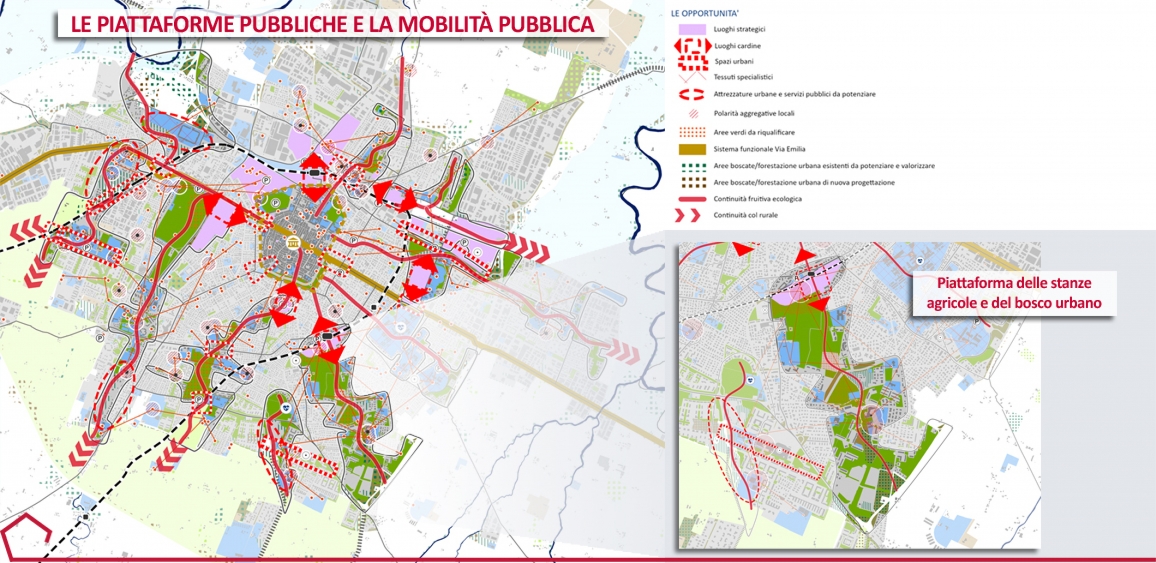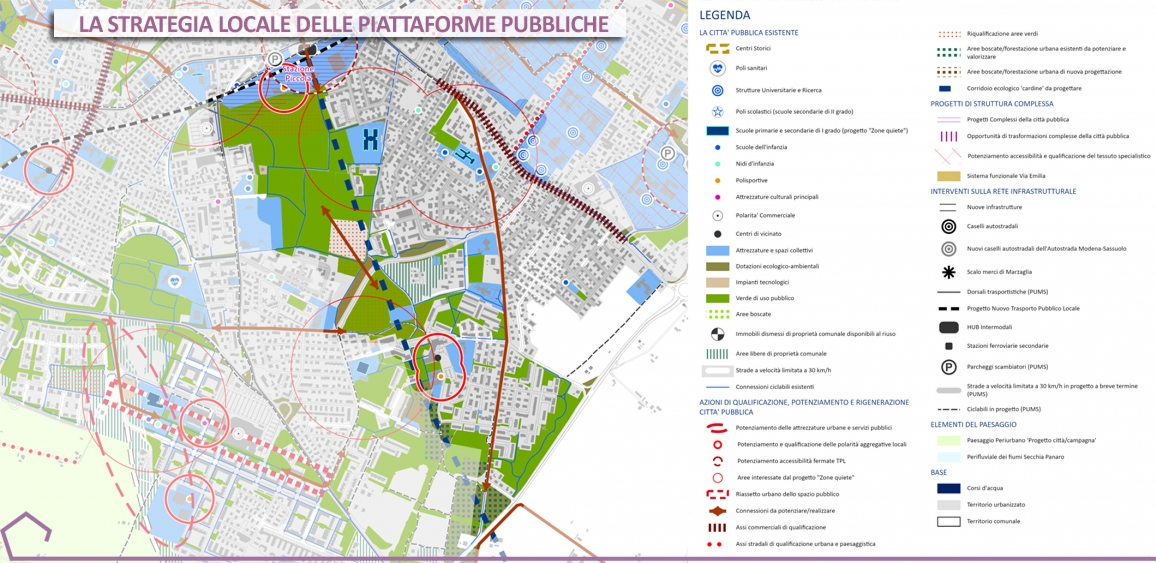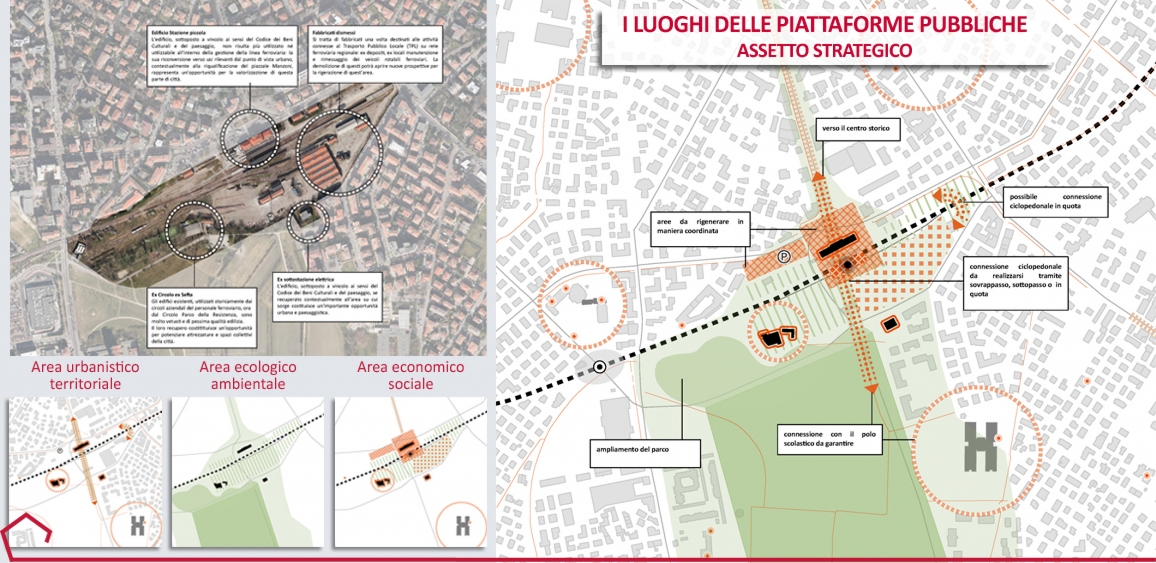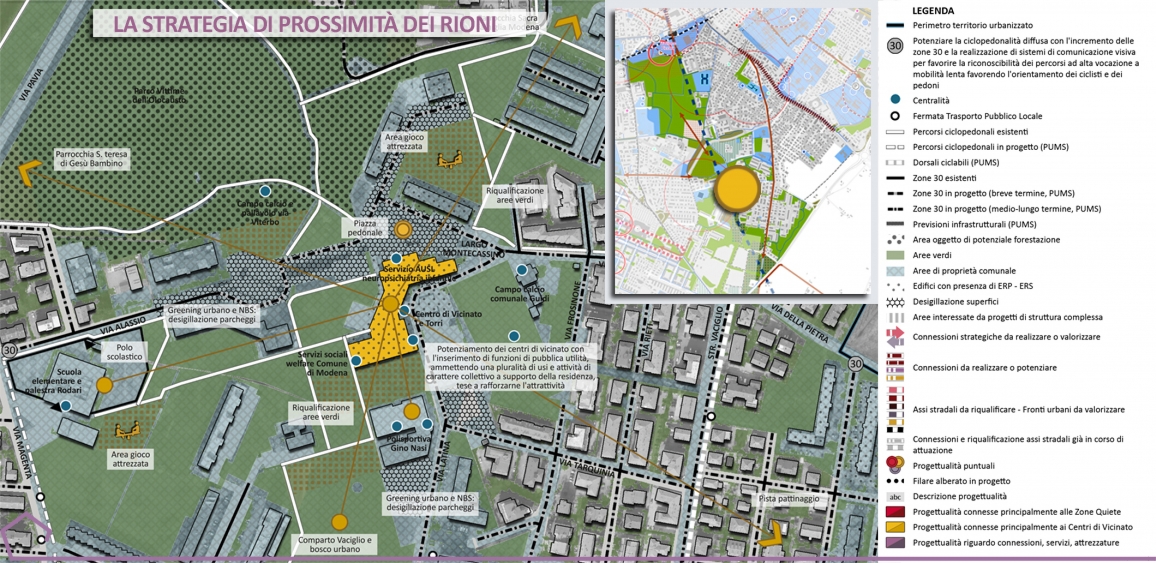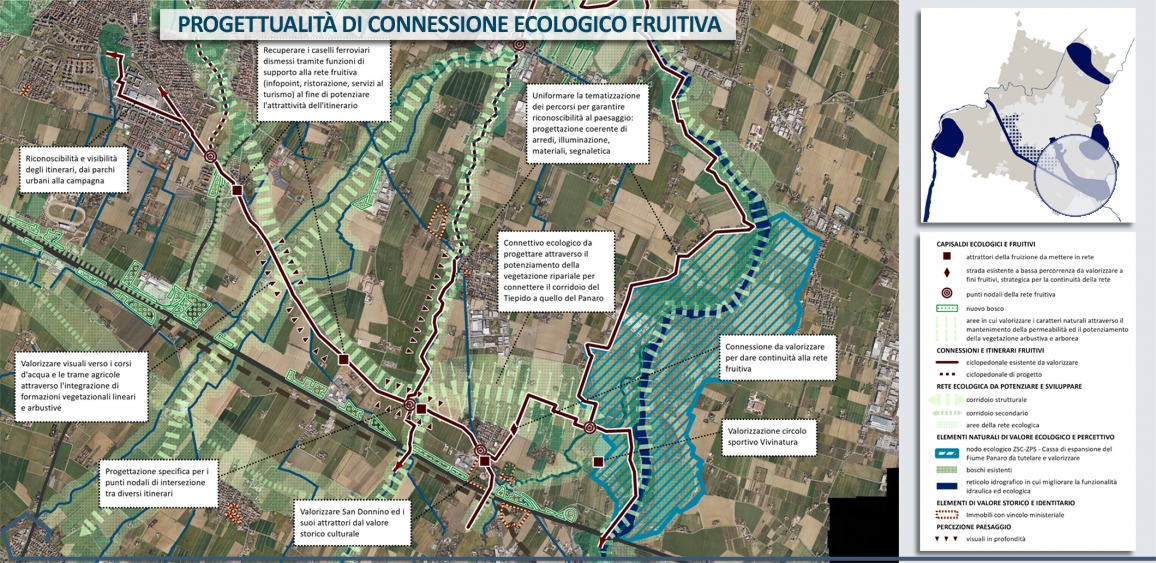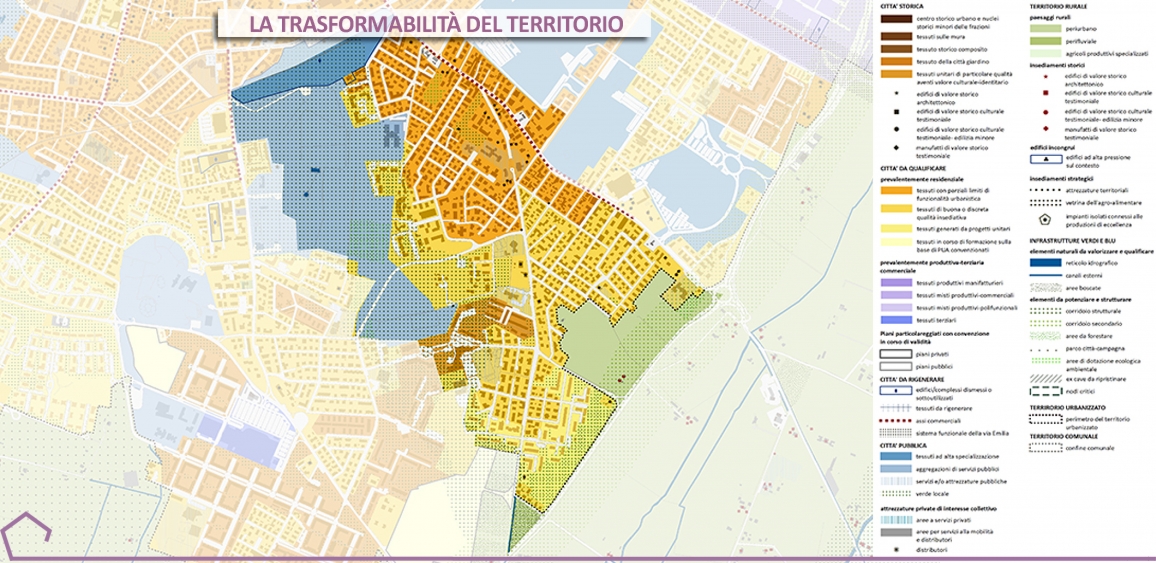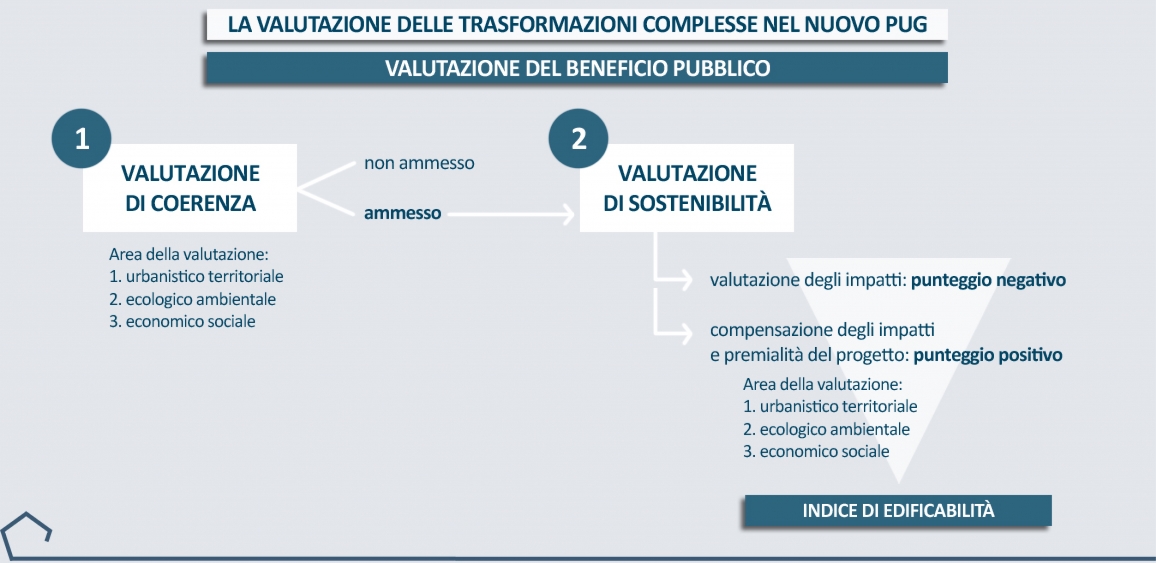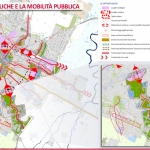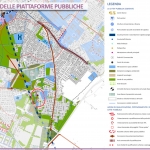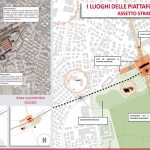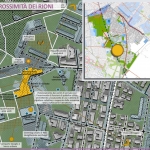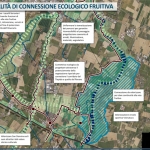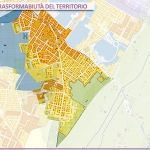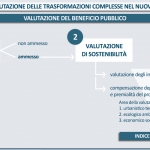Ecological and digital transition, urban and environmental quality and local strategies to support the health and wellbeing of citizens, to address the critical issues of the territory: these were the starting points that guided the definition of the vision and elaboration of the new Plan. The WYP proposal, adopted by the Modena City Council and soon to be adopted, constitutes the frame for a compact, attractive, innovative and environmentally sustainable city and is made up of five components, whose circular and intersecting relationships constitute the necessary reference for the government of the territory.
Strategy, Discipline, Knowledge Framework, ValSAT and Constraints and Safeguards, address, order and translate plan choices and guide transformations.
The Strategy, the result of the Diagnostic Knowledge Framework and the Administration’s guidelines, is articulated both in the urban and territorial dimension with contexts, planning focuses and places, and at the local scale with the districts: conditions, opportunities and needs of the public city are thus fully defined.
The Framework is conceived to achieve the Strategy’s objectives and to favour the opportunities for densification and regeneration within the perimeter of the current city, emphasising the contribution to the public city. The Framework itself dictates prescriptions and conditions for both diffuse and complex transformations: all must respect Constraints and Protections and contribute to the increase of the endowment. To diffuse transformations the standards of the fabrics apply, while to complex ones the Public Benefit Assessment applies, an innovative methodology adopted with the PUG of Modena to estimate the coherence, impacts and rewards of interventions and to define the admissible building quantities.
Finally, the ValSAT has accompanied the entire process and constitutes the tool for monitoring the effectiveness of both the Plan and the transformations.
Italiano


